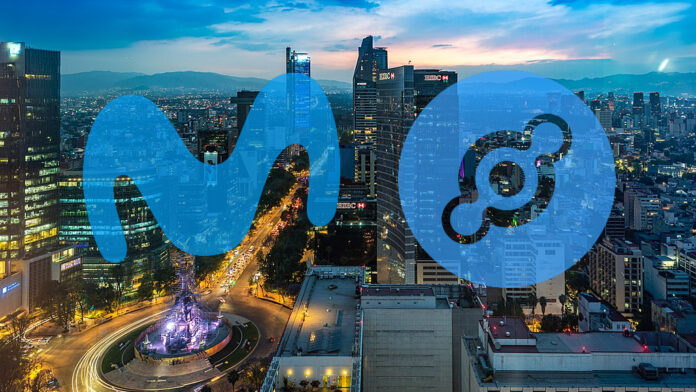Network operator Movistar, owned by Telefónica, is working with Nova Labs to integrate the US firm’s decentralised blockchain-based Helium Network into its national cellular 4G/5G service in Mexico. A statement said 2.3 million Movistar subscribers will “soon” get access to the Helium Network, which rewards individuals and organisations to deploy and manage their own LoRaWAN and 5G gateways, as part of a decentralised sensor- and broadband-comms network.
Movistar and Helium have been testing the concept with Movistar customers since last year. For Movistar, the idea to integrate community-owned infrastructure into its cellular network is to extend coverage in certain areas and to offload data traffic along the way. They have “jointly designed” the setup to allow subscribers to migrate between the two networks. The initial phase of the project will see the Movistar network expanded effectively to over 300 Helium Network “sites” (gateways).
The Helium Network was originally based purely on non-cellular LoRaWAN technology for IoT sensor comms; it has since morphed into a community managed cellular extender network, as well. Its concept is to reward individuals and businesses to deploy gateways (‘Helium Mobile Hotspots’) and field local data traffic with HNT (Helium Network Token) cryptocurrency tokens.
It uses the Solana blockchain as its foundation, and a proof-of-coverage (‘PoC’) consensus algorithm in subnetworks to calculate remunerations. Its 2024 tests with Movistar in Mexico took place in Mexico City and Oaxaca. Movistar subscribers apparently offloaded an average of 390MB of data to the Helium Network per day during the trials, said Nova Labs – equivalent to about an hour of connection time, or “five hours of social media browsing or sending 3,900 emails”.
The deal will reduce the cost of network densification for Movistar, in theory, by passing gateway costs to private Helium Network operators. Helium “mobile hotspots” will be available in Movistar retail stores and web shops. Movistar will resell Helium Network coverage to local mobile virtual network operators (MVNOs). It said the solution is “ready for integration with other operators who wish to implement decentralized telecoms networks based on Helium’s blockchain technology”.
Movistar has around 24 million customers in Mexico. Telefónica’s investment vehicles Telefónica Ventures and Wayra are investors in Nova Labs. Movistar has been supported on the project by Telefónica Innovación Digital, its parent’s innovation arm. The Helium Network claims around 59,000 gateways in Mexico and the US, and around 300,000 daily subscribers from Helium Mobile, its cellular service offering, and other carriers using the network.
It said the deal with Movistar “accelerates [its] mass adoption”. A statement said: “Helium and Movistar are flipping traditional telco on its head with a bold new business model that leverages network infrastructure that acts as mini-cell towers powered by individuals rather than massive centrally-operated cell towers. This model slashes overhead infrastructure costs for carriers while improving coverage for consumers.”
Camilo Aya Caro, president and chief executive at Movistar in Mexico, said: “We are focused on an alliance model that allows technological deployment acceleration and better quality for users, while generating efficiencies. We are seeing what’s possible and exploring how a network powered by people can bring more value to Telefónica and our subscribers across Mexico. This partnership will be a milestone in reshaping connectivity, with Mexico leading the charge.”
Mario Di Dio, general manager for networks at Helium, said: “Helium is on a mission to make connectivity more affordable for the masses. Collaborating with Movistar amplifies our vision of decentralized connectivity, inviting millions of their subscribers to use the Helium Network.”
Earlier this month, the firm introduced a free phone plan (“the nation’s first”) in the US. Its Zero Plan offers 3GB of data, 300 texts, and 100 minutes – for free, with “no contracts, hidden fees, or gimmicks”, it says. As per its network model, the plan incentivises takeup. It offers so-called ‘cloud points’, redeemable for gift cards for stores and services (“from food to rideshares, streaming services, and more”), in exchange for anonymised location sharing, referrals, and surveys.
It is also offering an Air Plan (10GB of data, unlimited talk and text; for $15 per month) and an Infinity Plan (unlimited data, talk and text; for $30 per month). Coco Tang, general manager of mobile subscribers at Helium, said: “Connectivity is an essential part of life… But for far too long, the telco industry has treated it like a luxury, not a right. This is more than just a free phone plan; it’s a movement to make wireless service accessible, affordable, and rewarding for everyone.”
The firm is also working to establish a decentralised last-mile internet solution, using the DAWN (Decentralized Autonomous Wireless Network) broadband protocol built by internet service provider Andrena. The DAWN protocol facilitates decentralised broadband through the use of fixed wireless, it said. Also built on the Solana blockchain, it allows the Helium Network to tap into its broadband and backhaul services, and thereby to extend its reach into last-mile connectivity.
DAWN nodes connect directly to data centres, allowing nearby users to access the internet without traditional service providers. It stated: “[The]model eliminates the middleman for both mobile and broadband, reduces costs, and enables users to share connectivity with others… By combining the Helium Network with DAWN’s broadband nodes, this partnership advances a new, fully community-owned internet that prioritises affordability, accessibility, and equitability.”
The plan is that 8,000 nodes in the DAWN ecosystem in the US will be integrated into the Helium Network in early 2025, with more to be added.

